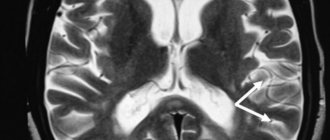Coagulation, manifested by clots during menstruation, is a fairly common symptom, in most cases not the result of a disease. However, if there are a lot of bloody clots, menstruation is accompanied by severe pain and excessively heavy and prolonged bleeding, this means a deviation from the norm and the need for diagnosis and treatment by a gynecologist.
Frequent causes of clot formation are hormonal imbalances, blood clotting disorders, as well as pathologies such as endometriosis, polyps and fibroids in the uterus.
Monthly vaginal bleeding occurs as a result of detachment of the epithelial layer of the uterus, so it is natural that the discharge is heterogeneous. Most women experience clots during menstruation.
What is a clot
During menstruation, each woman has a different intensity of bleeding, and the color of the spotting is also different. The amount of blood lost and its thickness also vary from person to person, but in all women, without exception, anticoagulants are secreted during menstruation, which slow down clotting. If these substances do not do their job, small lumps may form, which are normal and not dangerous.
Treatment will most likely not be required if:
- the woman is not yet 18 years old, her periods have recently started and her cycle is sometimes “strange”;
- if a woman has recently given birth or undergone surgery;
- if the pregnancy was terminated in the near future or curettage was performed;
- the uterus is not located naturally and the woman knows about it;
- woman uses a spiral.
A large blood clot may be released in the morning; it is formed due to the fact that the woman has been lying in one position for a long time and the discharge has had time to coagulate. Menstruation with lumps is normally not accompanied by pain, fever, or poor general health. The discharge itself looks like pieces of jelly with veins.
Each of us has heard about the abnormal attachment of a fertilized egg and its tragic consequences for both the fetus and the mother - in case of untimely diagnosis of the pathology. Read more in the article: “Early ectopic pregnancy.”
Content
- Why do clots come out during menstruation?
- Menstruation with clots: reasons
- Menstruation with clots: reasons
- Brown periods with clots: treatment
Some women experience brown periods with clots.
Often they are not a sign of serious illness. But still, if you find blood clots during your period, consult your doctor and undergo an examination to determine the cause of their occurrence. We will try to understand the main reasons why periods come in clots further in the article.
When to suspect pathology
There are a number of signs that can indicate to a woman that something is going wrong in her body. A woman doesn’t need her period to miss out on life for a week. This is a natural process that should be easy and painless.
- Bleeding lasts longer than normal. The normal duration is 3 to 5 days.
- Blood is lost profusely, a woman uses more than 2 packs of sanitary pads (100-150 ml of blood loss).
- Strong, unpleasant odor of discharge.
- Severe pain. It hurts to touch the stomach; every movement increases the pain.
- The cycle is not stable.
- Menstruation comes either too often or late. Normally, the duration of the cycle from 1 day of menstruation is 26-30 days.
If there is at least one point that matches, this is a reason to visit your gynecologist and share the problem.
If a woman is bothered by spotting with blood for several days before her period, the beginning of the cycle is considered from the first day of the appearance of this discharge.
Only a detailed study, including tests, smears, ultrasound and examination, will help the doctor draw conclusions about women’s health.
Diagnostics
The examination involves the use of laboratory, hardware and instrumental techniques. The most informative:
- Blood test (clinical, biochemical), general urine test. They help detect the inflammatory and infectious process, hormonal imbalance, and anemia. The determination of blood clotting is valuable.
- Ultrasound of the uterus and appendages.
- Hysteroscopy.
- Laparoscopic examination (in 90% of cases accompanied by a biopsy).
- MRI. The method of complex radiation imaging is used to confirm the presence of a tumor process.
Diagnostic measures are prescribed taking into account the expected type of disorder and the cause of its development.
Can hormonal imbalance cause the formation of lumps?
Young teenage girls often experience minor hormonal imbalances. After all, the cycle is not established immediately and lumps of menstruation are not uncommon. It’s a completely different matter when an adult woman faces hormonal imbalances, the causes of which can be very different.
Advertising:
- Constant stress
. Many diseases are triggered due to trivial problems at work, quarrels, and tension in the family. Including hormonal problems. - Abortion
. The body experiences enormous stress after termination of pregnancy for personal or medical reasons. In this case, the restructuring of hormones occurs quickly, menstruation comes, although it was not planned. This can cause even very large lumps to appear. - Changing the method of birth control
. Causes a hormonal imbalance, the nature, duration and amount of discharge may change. Much depends on how well this or that method was chosen. - Climax
. A very common cause of large lumps during menstruation is age. At risk are women who are 45 years of age or older, whose bodies are slowly preparing for menopause.
A woman's hormonal levels can be unstable for many reasons. The main ones are in the list, each of them can disrupt the cycle to one degree or another. Blood clots are the most common manifestation.
Today, saline solution is considered an excellent means of disinfecting and cleansing the nasal cavity from pathogenic microflora and mucus. This is a natural remedy that has no contraindications for newborns and during pregnancy. Read more in the article: “rinse your nose with saline solution at home.”
A little physiology
Menstrual blood has a rather complex chemical composition, the basis of which is glandular fibers and secretory fluid produced by the glands of the vagina and cervix. Clots can form when there are a large number of endometrial cells - an epithelial layer with a mucous structure that lines the uterine walls from the inside and is necessary for the successful implantation of a diploid fertilized cell (zygote). Starting from the middle of the menstrual cycle, the endometrium changes its density and structure, becomes looser and thickens. If the amount of female sex hormones exceeds the required physiological threshold, during menstruation the endometrium may prematurely coagulate in the uterine cavity and form clots.
Thickening of menstrual fluid can also occur with insufficient activity of anticoagulation enzymes, as well as in cases where a woman leads an insufficiently active lifestyle, which contributes to stagnation of blood circulation in the pelvic organs. This situation is typical for women who hold office positions, are overweight, which limits mobility, or suffer from chronic disorders of the endocrine system. For the same reason, blood clots during menstruation can be observed in women who have undergone surgery or injury and are temporarily limited in movement.
Important!
Bad habits (nicotine and alcohol addiction, use of narcotic and toxic substances) can also contribute to increased blood clotting due to changes in its chemical composition and neutralization of enzymes that regulate the consistency of menstrual fluid.
Video - Three questions about periods that women are embarrassed to ask
Endometriosis and adenomyosis as a cause of lumpy discharge
Endometriosis is a disease characterized by the growth of the uterine lining outside its confines. The disease is common and is accompanied by very painful and prolonged menstruation. Also, failures up and down (less often) are not uncommon. Menstruation is heavy, blood loss is often greater than in healthy women. Clotted blood is a common symptom that identifies endometriosis.
Adenomyosis, in turn, affects not only the uterus, but also nearby organs. The appearance of these diseases still does not have specific causes; it is generally accepted that because of it the uterine mucosa can resemble a honeycomb. Possible reasons may include:
Advertising:
- surgical operations in the body of the uterus;
- abortion;
- cauterization of erosion;
- curettage of the uterus;
- C-section.
Over time, untreated diseases affect the contractile function of the uterus, then it is no longer the coagulated blood that comes out as clots, but the sloughed uterine mucosa.
Lumps with endometriosis are denser, often larger, this is due to cycle disorders, over time the walls thicken unevenly.
Diseases of the uterus are the main cause of intrauterine blood clotting
Diseases of the uterus are the largest group of gynecological pathologies. Almost always, disturbances in the functioning of the organ are accompanied by changes in hormonal levels, therefore, in addition to standard diagnostic methods, a woman can undergo diagnostic curettage using a curette (a more gentle method is vacuum aspiration), followed by a histological examination of the collected material in order to determine the hormonal levels and exclude tumor processes.
The most common pathology of the uterus, various forms of which are diagnosed in every fifth woman aged 20 to 50 years, is uterine fibroids. Fibroids are formed by cells of the myometrium (the muscular layer of the uterus), can have a diffuse or nodular form and occur without any symptoms for several years. Myoma is a benign tumor, so in most cases, doctors choose a wait-and-see approach with careful monitoring of the patient and monitoring of changes in the myomatous nodes.
The symptoms of this type of tumor are quite sparse and may include the following signs:
- increased nagging pain a few days before the onset of menstruation and during menstruation;
- exceeding the physiological norm of secreted menstrual fluid (a volume of 50 to 80-100 ml is considered normal);
- blood clots during menstruation;
- increase in basal temperature.
Another reason related to the functioning of the uterus and that can cause premature blood clotting is congenital malformations of the uterus. They are formed during the period of intrauterine growth and development, most often caused by a genetic factor, but in some cases they can be a complication of inhalation or consumption of toxic products. Most often, girls and young women experience a bending of the uterus, which in 90% of cases leads to the inability to bear a child while maintaining the full scope of reproductive functions, as well as an intrauterine septum, a defect often associated with abnormal development of the renal system.
With these defects, the free exit of blood from the body of the uterus is difficult, which leads to its stagnation and the formation of small clots. Treatment of these defects is carried out only in foreign clinics, but is not accessible to most middle-class women due to the very high cost.
Polyposis can cause clots to form
Women over 30 years of age are at risk for this disease. The main way to identify polyps is through clots in menstrual fluid. The endometrium grows, filling the uterus, and during menstrual bleeding, parts of it are also released.
- Menstruation becomes irregular and painful. A woman temporarily loses her legal capacity and finds it difficult to do household chores and work.
- Clots may come out in chunks. Patients characterize them as “scraps” of tissue.
- The cycle is not regular, sometimes menstruation occurs every other time.
It is also interesting that at the beginning of the disease, the blood clots are not large and resemble coagulated blood.
Polyposis is a benign disease, with the exception of the only cancerous form - adenomatous.
However, from cycle to cycle they increase, often becoming denser. If not all of the remnants of the old endometrium have come out, this can trigger inflammation. Ultrasound will help identify polyposis.
What other causes of lump formation
The cause of lumpy discharge does not always lie in the uterus. Sometimes, even the most unexpected illnesses affect women's health.
Advertising:
- Inflammation in the genitals. Various infections of both internal and external parts of organs can cause strange menstruation with lumps. Your period may be dark, thick, or excessively thin.
- Obesity. Excess weight affects all body systems, including the level of estrogen in the blood. The level affects the rate of endometrial growth.
- Thyroid diseases, diabetes, blood pressure. These diseases disrupt the body's metabolism, which can lead to heavy menstruation with lumps of clotted blood.
- Taking medications. Some medications can affect the course of your cycle.
- Excess vitamin B. Causes the formation of dark-colored blood clots during menstruation. Before critical days and in the middle of the cycle, mucus with blood streaks appears.
- Temperature. Heavy menstruation with lumps can be caused by commonplace acute respiratory infections. An increase in temperature most often affects only one cycle, but it frightens the woman no less.
- Active sports, loads before the start of the cycle. They increase blood flow to the pelvic organs, due to which menstrual periods become abundant and blood clots faster.
Each of these reasons or their combination can affect the quality of the cycle once or affect the overall health of the female reproductive system. If lumps of blood appear constantly, it is better to find out why this is happening from your gynecologist and whether this is normal.
Pathological changes in female organs
There are serious problems that affect a woman's overall health, including the possibility of blood clots during her period.
Advertising:
- Myoma
. This is a serious benign neoplasm that disrupts the “standard” process of expelling the obsolete layer of the endometrium. The clots come out more than once, but over several days. - Hyperplasia
. The disease affects many women and is always accompanied by the release of dark lumps. - Cancerous changes
. Due to the tumor, the removal of the rejected unnecessary layer is difficult. The blood coagulates and causes fear. The lumps can be really huge, there are a lot of them, and menstruation causes severe pain. - Polycystic
. Ovarian cysts trigger hormonal problems. Bleeding in the middle of the cycle is not uncommon, and menstruation itself causes excruciating pain.
Pathological diseases can be life-threatening for a woman. Most of them cause pain during sexual relations, and contact may result in bleeding. Heavy periods and bleeding between periods can activate or worsen anemia.
Once heavy periods
Miscarriage
Miscarriages can often occur before a woman even knows she is pregnant, because in the very early stages they can appear as heavy periods.
Ectopic pregnancy
An ectopic pregnancy occurs when a fertilized egg implants outside the uterus. Symptoms of an ectopic pregnancy can easily be confused with heavy menstruation. This condition can be fatal.
If you are pregnant and experience heavy bleeding, you must call an ambulance!
Non-hormonal intrauterine device
Heavy periods are a common side effect of using non-hormonal IUDs.
Medicines
Blood thinners and anti-inflammatory drugs may cause heavier menstrual bleeding.
Please remember that heavy menstruation is not always explained by some kind of pathology. Each woman's menstrual cycle is unique and heavy bleeding may simply be a feature of your body. However, large blood loss can cause excess iron loss and anemia. With mild anemia, you may experience fatigue and weakness. More severe forms can cause dizziness, headache, and rapid heartbeat. Heavy periods are often accompanied by severe uterine cramps, which cause severe pain (dysmenorrhea). Severe pain cannot be tolerated and this condition may require medication.









